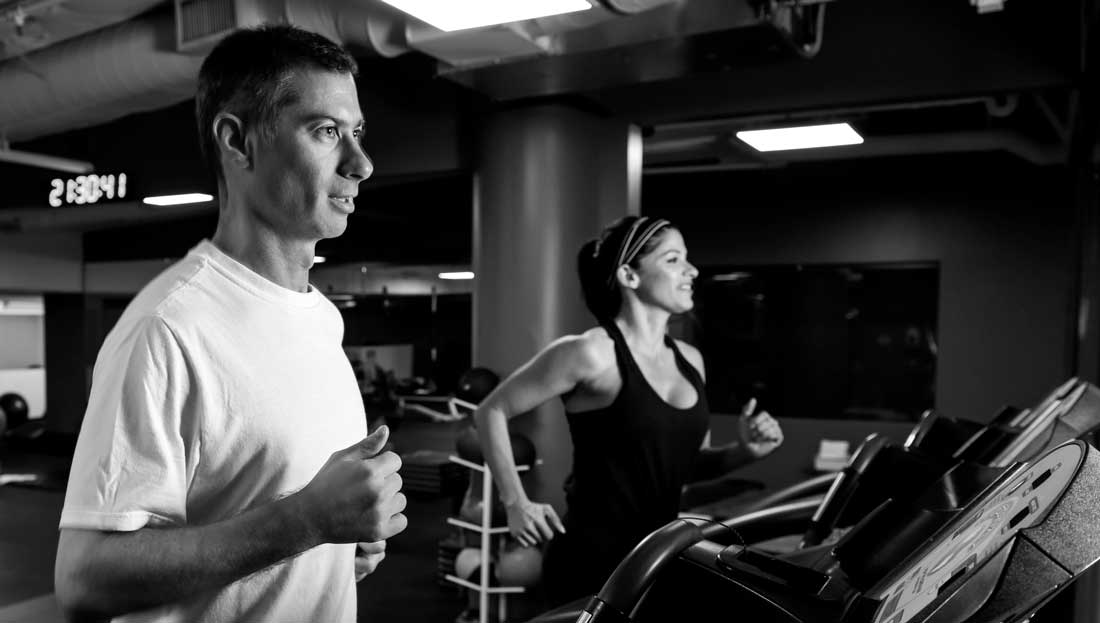
Ask just about anyone how he or she is doing and you’re likely to hear the same word repeated over and over: “Busy.” Everyone seems to be short on time, with most people claiming they just don’t have enough of it to do everything they want to do—including exercise. But as Albert Einstein once observed, time is relative. “Time has no independent existence,” he said, “apart from the order of events by which we measure it.” In other words, time is what you make of it—and even the busiest schedules can make room for short bouts of exercise.
I’ve spent much of the past 30 years appreciating the impact that short workouts can have and creating workouts that can help clients get extremely fit in a short period of time. I created the following 14-minute metabolic workouts (and wrote the book on them) as a solution to everyone’s time problem. These workouts make it possible for you to help your clients achieve great results in 14 minutes or less.
If you’re a skeptical person like me, you may think 14-minute workouts sound too good to be true, but if your clients focus and follow the protocols to the letter, they will boost their health and become more fit. Why 14 minutes? Because it’s precise. Your clients will pay attention and focus on the effort because they know they can get in a workout and get back to their busy lives.
Cardio Workouts
Despite the attention the fitness industry gives to skeletal muscles, the heart is where life lives. How well your clients’ cardiovascular systems work governs, to a large extent, how healthy and fit they are. Research shows that cardiovascular fitness is more important than body weight or body mass index in determining your health and predicting your mortality. Obese individuals with at least moderate cardiovascular fitness have about one-half the rate of cardiovascular disease or all-cause mortality than their normal-weight but unfit peers (Blair and Church, 2004).
Perhaps the most elegant adaptation the body makes to cardio workouts—especially interval training—is an increase in the size of the heart. The enlargement of the heart’s left ventricle results in a greater stroke volume (the amount of blood the heart pumps with each beat) and cardiac output (the amount of blood the heart pumps each minute). The larger the left ventricle, the more blood it can hold; the more blood it can hold, the more blood (and oxygen) it can pump. Cardiovascular fitness is largely dictated by the heart’s ability to pump blood and oxygen.
If you want your clients to get the most fitness, greatest calorie burn and most potent health boost in the least amount of time—like 14 minutes—cardio-interval workouts are the most time-efficient workouts they can do. All of the 14-minute workouts featured below are intense, so make sure your clients warm up, starting at a low intensity and progressing to a higher intensity to create a smooth transition from the warm-up to the workout.
For cardio and sprint workouts, choose running, elliptical, cycling or rowing.
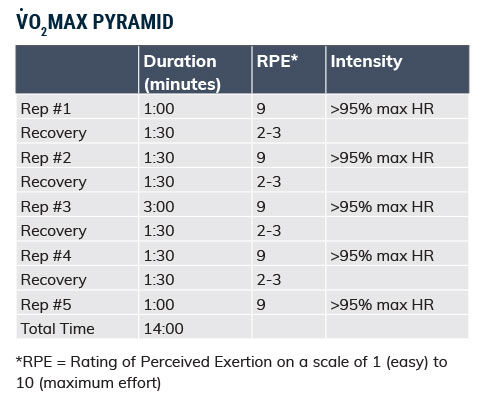
Treadmill Triple 3 Hills: 3 Reps, 3 Minutes, 3% Grade
Use the same workout speed for each rep and the same recovery speed for each recovery interval. For the reps, choose a speed that is challenging. For the recovery intervals, decrease the speed to something slow enough that enables your client to recover before the next rep.
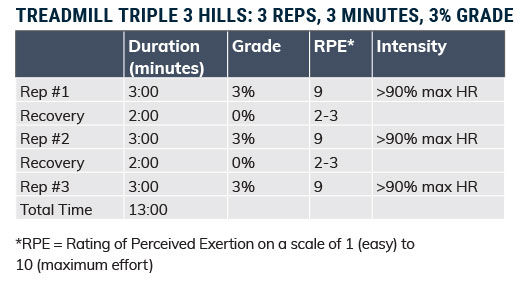
Sprint Pyramid
Sprinting increases muscle power by recruiting fast-twitch muscle fibers. It also tones the legs, glutes and core.
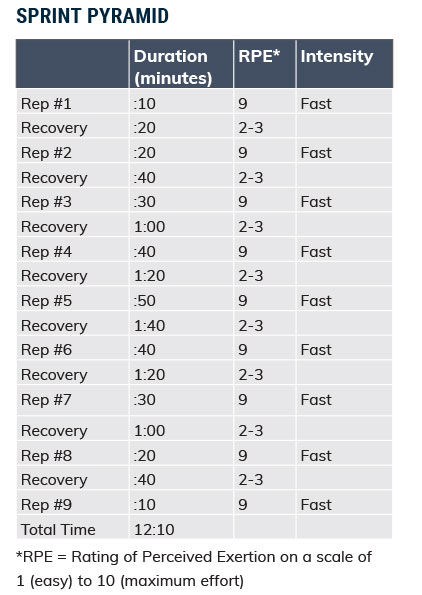
True Tabata
Have clients do this workout on a stationary bike and instruct them to sprint nearly as fast as possible for each 20-second rep. In Tabata’s original research study, subjects cycled at 170% VO2max, which was determined from VO2max tests in their laboratory, and they did this workout five times per week for six weeks. Your clients should be cautioned from trying this at home.

Muscular Endurance Workouts
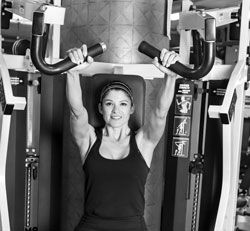 To increase muscular endurance and get shapely muscles, muscles need to contract against a low-to-moderate resistance—60 to 80% of the maximum the client can lift just once—with short recovery intervals between sets. To improve endurance, what matters is the amount of time the muscles are under tension, so these workouts include many reps with short recovery intervals.
To increase muscular endurance and get shapely muscles, muscles need to contract against a low-to-moderate resistance—60 to 80% of the maximum the client can lift just once—with short recovery intervals between sets. To improve endurance, what matters is the amount of time the muscles are under tension, so these workouts include many reps with short recovery intervals.
Muscular Endurance Upper-body Drop Sets
Decrease the amount of weight after the first set by 5 to 10 pounds and have clients immediately do the next set of 10 reps. Then, drop the weight again by another 5 to 10 pounds and have them immediately do the third set. A 10-second recovery between sets is built into the workout to provide enough time to decrease the amount of weight.

Sprint/Body-weight Circuit
This circuit sequences sprint running with a lower-body exercise, upper-body exercise and core exercise for a total-body workout. Clients should move immediately from one exercise to the next. Have them complete the circuit once or twice with two minutes of rest between circuits. If performing this workout in a gym, they can substitute sprint cycling for sprint running, making the sprint fast and challenging, but not all-out.

Muscular Strength and Power Workouts
In the early days of physical education, it was the strength of a muscle that garnered all of the attention. Tests of muscular strength have existed since at least the time of the ancient Olympics, when athletes were required to lift a ball of iron to qualify. In 1873, Dr. Dudley Sargent, a pioneer in physical education, initiated strength testing at Harvard University. It has since become an important tool in evaluating muscle characteristics.
Muscular strength can be developed two ways: (1) by making muscles bigger (hypertrophy) or (2) by increasing the ability of the central nervous system to “communicate” with the muscles by increasing the number of muscle fibers it recruits and increasing the frequency of recruiting signals it sends to the muscle fibers.
To get stronger by making muscles bigger, your clients need a strong enough stimulus to cause a substantial amount of muscle protein breakdown, which results in more muscle protein synthesis. This is accomplished by lifting a relatively heavy weight—about 80 to 85% of the maximum that can be lifted just once (i.e.,g the 1-rep max)—and allowing for enough recovery between sets to repeat the set at the recommended intensity.
To get stronger by improving the neural communication to muscles, lift very heavy weights—about 95% of the 1-rep max—only one to three reps per set, with long recovery intervals between sets. When your clients train this way, they’ll get a lot stronger without getting bigger muscles because the total number of reps—and therefore the total amount of protein breakdown—is low.
If you have ever tried to lift a heavy weight quickly, you’ll notice that it’s much more difficult than lifting it slowly. For a muscle to exert its maximum strength, it must produce force slowly. When you multiply muscular strength by the speed at which a muscle produces force, you get muscular power. For muscles to be powerful, they must be strong and they must be fast. To improve muscular power, have your clients lift a light weight quickly or have your clients use their own body weight with plyometrics.
Upper-body Strength Pyramid
For this workout, have clients increase the amount of weight by 5 to 10 pounds as they decrease the number of reps in each set.

Total-body Dumbbell Strength Workout
The exercises in this workout alternate between lower body and upper body and progress from bigger muscles to smaller muscles. Clients should move immediately from one exercise to the next.

Plyometric Power Workout
Have clients perform these plyometric exercises on a soft surface with good footing, such as grass, artificial turf or a yoga mat. Instruct clients to spend as little time on the floor as possible between hops, bounds and jumps, and to think of their legs like springs and focus on exploding off the floor.
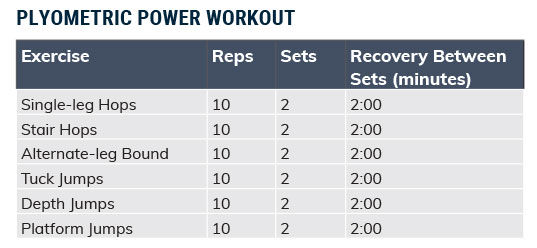
Reference
Blair, S.N., and Church, T.S. (2004). The fitness, obesity, and health equation: is physical activity the common denominator? Journal of the American Medical Association, 292,10,1232-1234.
Adapted from 14-Minute Metabolic Workouts © Jason R. Karp. Used with permission.

 by
by 





 To increase muscular endurance and get shapely muscles, muscles need to contract against a low-to-moderate resistance—60 to 80% of the maximum the client can lift just once—with short recovery intervals between sets. To improve endurance, what matters is the amount of time the muscles are under tension, so these workouts include many reps with short recovery intervals.
To increase muscular endurance and get shapely muscles, muscles need to contract against a low-to-moderate resistance—60 to 80% of the maximum the client can lift just once—with short recovery intervals between sets. To improve endurance, what matters is the amount of time the muscles are under tension, so these workouts include many reps with short recovery intervals.





